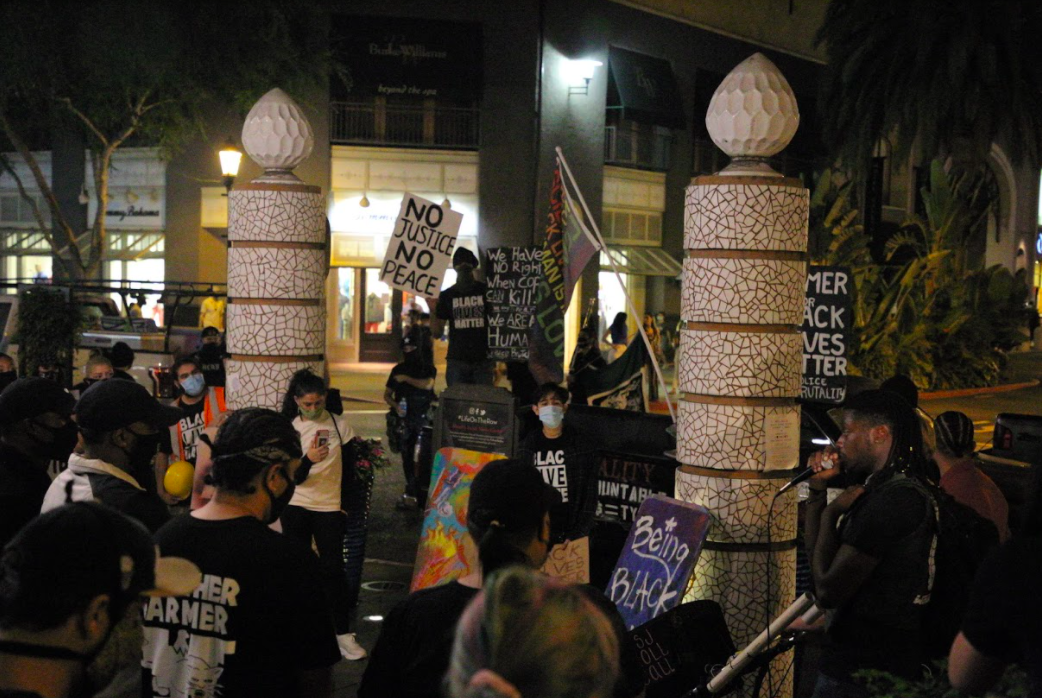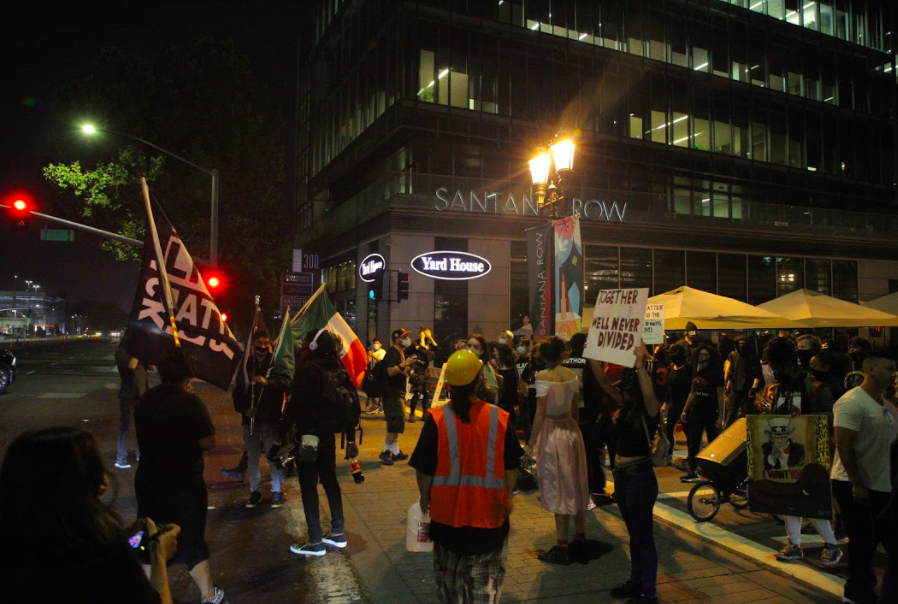Black Lives Matter supporters fill Santana Row, demand justice for Gregory Johnson
October 7, 2020
The chants of “Being Black is not a crime!”, “F— your privilege!” and “Black power!” filled the streets of Santana Row in San Jose on Oct. 2, at a Black Lives Matter protest over the death of former San Jose State University student Gregory Johnson.
Participants in the protest, nicknamed “Slow the Row,” are calling for the San Jose Police Department and San Jose State University to be held accountable for Johnson’s death, and for the investigation of his death to be reopened.
Johnson died in 2008 at the San Jose State fraternity Sigma Chi, where he was found hanged. He was the only Black member of the fraternity at the time.
The cause of Johnson’s death remains controversial. Johnson’s death was ruled a suicide by police, but protesters believe that he was lynched by his fraternity brothers because of contradictory evidence.
Some cite the evidence is false because the vertical space given in the police report was 5’10, but Johnson was reportedly taller.
“It makes no sense that it was a suicide. He didn’t kill himself,” Shruthi Tuplar, 21, psychology and criminal justice major at UC Irvine, said. “That fraternity is very white supremecist and that shouldn’t exist today in 2020. Sigma Chi needs to be disbanded.”
Sherrill Lin, 21, communication major, agreed that Johnson’s death was not a suicide.
“I 100% believe this was a homicide,” she said. “His family made clear that he was never a suicidal individual.”
The protest also created discussions among student participants about how their universities have failed to provide protection and equal treatment of black students on campus.
“A student ran over protesters with her Jeep at the peak of the George Floyd protest and received no consequences from the university,” Tuplar said. “Universities need to make sure that they’re taking actions to be progressive and diverse.”
Sanika Mahajan, 21, social studies major at Harvard University, said that Harvard was complicit in the violent treatment of its Black students.
“Just two years ago when I was a freshman a black student was brutalized by police for being intoxicated and instead of getting medical attention, the Cambridge police showed up and arrested them,” she said. “Harvard did nothing about it.”
Mahajan also said that the mistreatment of Black students exists at a structural level within the college system, and not just at Harvard.
“Personally my connection to Harvard as a university is often very conflicting for me because, obviously I benefit from the institution and I’ve gotten my education there but at the same time I know that it’s an egregious overuse of its power,” she said. Harvard is complicit just like San Jose State. “There are many of the same structures.”


